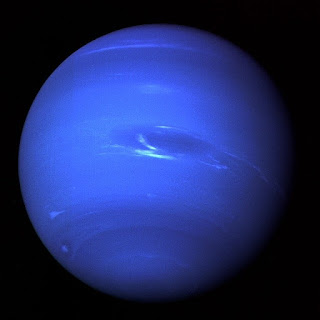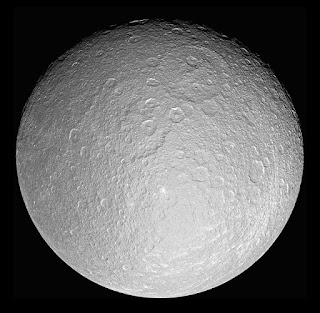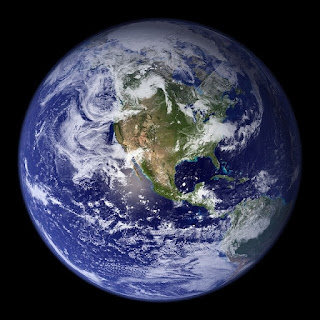THE NEPTUNE PLANET THE UNIVERSE
THE NEPTUNE PLANET THE UNIVERSE
NEPTUNE PLANET
Look up into a clear night sky with your naked eye and what planets would you see?
Technically you would be able to see all of them at one time or another all of them A apart from Neptune. It is the smallest of gas giant and also the furthest away. And it is a perplexing place. You would think our planet so far from the sun would not have a dynamic atmosphere that exhibit great storms and superfast Winds.
PHOTO OF NEPTUNE PLANET
So why is this planet as interesting as it is?
Neptune is the only planet found through mathematical prediction. You see when Uranus was discovered and astronomers verb plotting its orbit, they noticed that Uranus was not following their models. From perturbed orbit of Uranus, the scientist in 1846 concluded that there must be another undiscovered planet and he predicted where it should be, and remarkably Jahan gall was able to find it only a degree away from the predicted point.
Triton neptune's biggest moon was discovered a few days later. Since then, Neptune was little understood as its distance from earth and very small apparent size means it could not be studied from ground based telescope easily. it was not until 1989 when Voyager 2 arrived that a huge amount of an information about the planet became available. Suddenly we could see what the planet look like, confirmed planetary rings, and discovered a lot of previously unknown moons.
What do we now about this planet now?
Since plateau demotion to not a planet, Neptune is the eighth and furthest planet from the sun. It orbits about 3 a u from the sun on average, which means its 30 times further than Earth's orbit from sun. 30 astronomical unit in other words means 4.5 billion kilometre, and from that you can see why it would take a space probe using current technology 13 years to reach Neptune. 4.5 billion kilometre is a considerable distance.
Because of long orbit, it takes off used 165 year to orbit the sun once, which means we have only seen one Neptune year since its Discovery. this distance from the sun means the average temperature is Neptune atmosphere is very cold -201c.
If you look at the weather on Neptune, it actually has the fastest wind speed of any planet with wind speeds blowing westward on the equator reaching a surprising 2160 kph, and interestingly, most win travels retrograde do the rotation of the planet. Bands are also formed on the planet, colossal storms. When Voyager 2 passed it saw the great dark spot, a storm about the size of earth passing through its atmosphere. It also saw the smallest Storm card small dot spot. As Voyager 2 approach de Neptune, this Storm changed in shade from dark to light.
When Hubble telescope was launched, astronomers were curious to see the fate of these storms to see it they were a permanent feature like jupiter's great red stop. but when Hubble telescope was pointed at Neptune in 1999, the storms had disappeared, and storms have come and gone ever since. Bright and high altitude clouds also come and go.
STORMS ON NEPTUNE
Don't get me wrong, winds speed is fast on Uranus too, but does not compete with the Neptune at 900 kph.
Neptune is the coldest planet in the solar system but actually Uranus is the coldest planet in the solar system. Neptune radiates heat from with in, where is your nails radiates hardly any excess heat at all. This could be because a large Earth size body crashing into Uranus billions of years ago which depleted all of its primordial heat. Now the more active weather on Neptune might be due, in part, do this higher internal heat.
What is Neptune actually made of then?
Its internal structure and atmosphere is thought to be very similar to Uranus. its atmosphere is composed mainly of 80% hydrogen and 90% helium with very small amount of methane. It's this machine that gives Neptune its blue colour, although it's a dark shade. Again like Uranus, there is liquid Mantle of water, ammonia and methane ice surrounding in the core. Where the core and Mantle meet, the pressure is so great that the methane may break apart, and diamonds are formed under the pressure. Likely not diamond as you or I now, but there could be a liquid carbon ocean with solid diamond plotting in it and diamonds raining down in the Mantle like haillstone.
Neptune magnet field is offset 47 degree relative to itself rotational axis. When Voyager 2 discovered this about Uranus, the first theory was that it had something to do with its unusual axial tilt,. But then it found out the same thing about Neptune which has more normal axial tilt.
so the current theory is that magnetic field is either not generated in the core but rather by an electrically conducting liquid mantle.
every planet in the solar system has not actually got perfectly aligned magnetic field in Earth's magnetic North is different from where the north pole is.
POSITION OF NEPTUNE
Zooming out from Neptune now we come to its rings system. Like all other gas giants Neptune does a ring system, although it is very faint l it is very dense and extremely dark in colour. There are five known rings in all and they are all name after people involved in the discovery and research of Neptune.
the most famous and biggest by far is the Moon triton which actually contains most of mass of all moons put together. It has amazing pettners and this burnt orange colour. What is the most interesting about triton is the fact it orbits in retrograde and also at inclination to neptune's rotation, which implies it is probably a captured object and not something that was formed alongside Neptune. Triton is the biggest than Pluto and has atmosphere.






Comments
Post a Comment